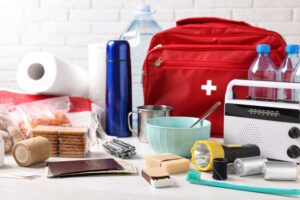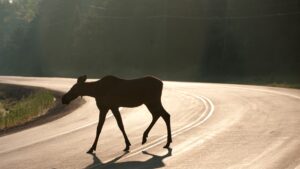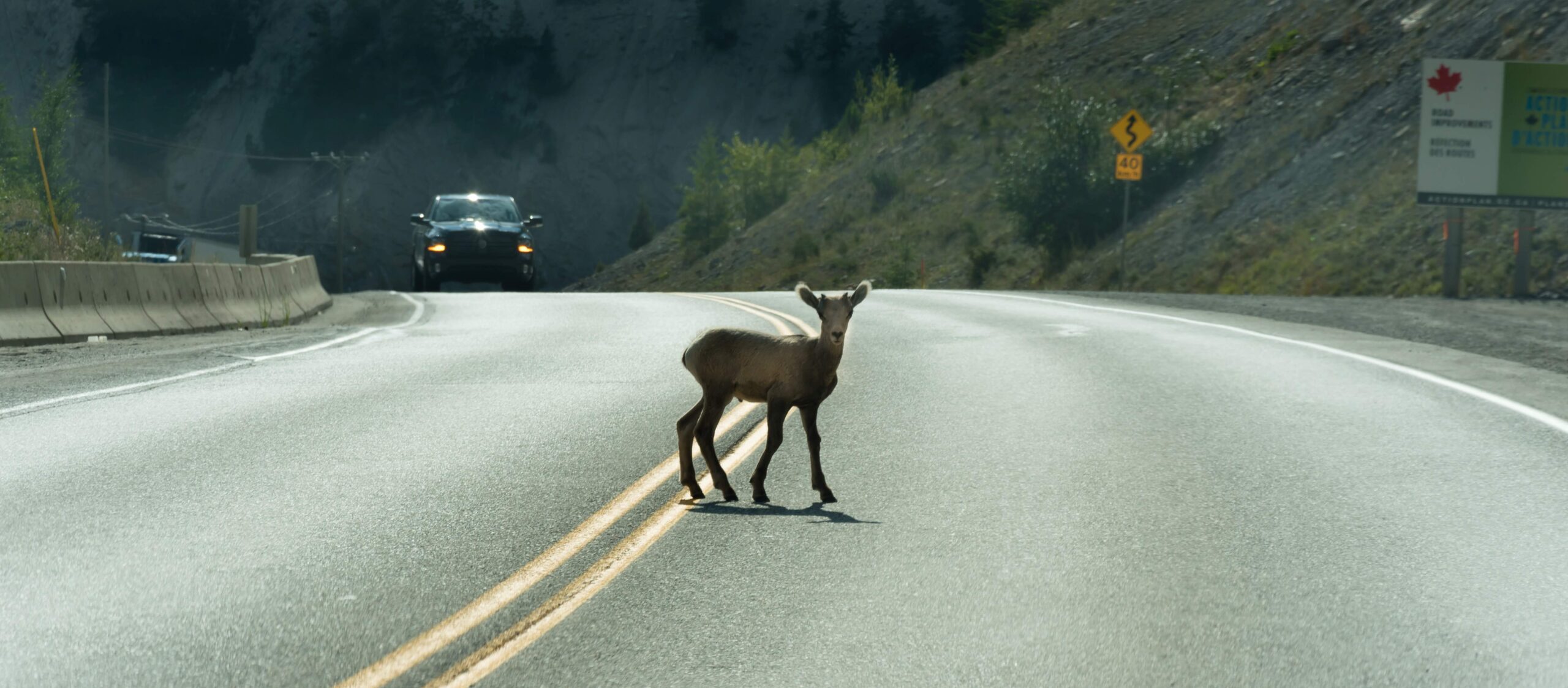In the event of an emergency while driving, such as a vehicle breakdown or a collision with wildlife, knowing how to respond quickly and calmly can make all the difference in ensuring your safety and the safety of others. Whether you’re dealing with a flat tire, mechanical failure, or an unexpected encounter on the road, taking the right steps can help prevent further accidents and get you back on the road as smoothly as possible.
Steps to take during an emergency
No matter what the emergency is, there are a few important reminders that apply to most situations:
- Stay calm.
- Stop your vehicle, pull to the right if able.
- Check for any injuries to yourself and any passengers.
- If someone is injured, call emergency response (911).
- If able assist with first aid, follow 911 instructions.
- Evaluate your surroundings (look for hazards), including traffic, power lines, fire, wild animals, and people.
- Turn on hazard lights.
- Move to a safe location, if able. Do not leave the scene.
- If able, exit on the passenger side of the vehicle (away from traffic).
- Put on high visibility clothing.
- Put out safety triangles.
- Inspect the vehicle.
- Notify dispatch or supervisor of incident (follow your incident reporting procedures).
Whether you experience a flat tire, fluid leak, overheating engine, malfunction and mechanical issues typically occur without warning or convenience. To assist in this, ensure you have completed your pre-trip inspection, and that you have an emergency kit prior to departing.
Emergency Kit Items: 
- First Aid Kit
- Flares
- Basic Tools
- Jumper cables
- Gloves
- Blanket
- Flashlight and batteries or headlamp
- Water and snacks
October and November are the two worst months for deer/vehicle collisions in Manitoba. Wild animals can be found on roadways anywhere, even within cities. Peak wildlife times are from dusk to dawn in the fall.
Tips to Help Keep You Safe
Animal Crosses: 
- Stay Calm.
- Dim your headlights (your bright lights may cause a deer to freeze on the road).
- Slow down and be prepared to stop.
- Blow your horn to scare the animal away.
- Avoid hard swerving: you may lose control or crash into another vehicle.
- Brake firmly to reduce the impact between an animal and your vehicle.
Animal Collision:
- Stay Calm.
- Take your foot off the gas, immediately reduce speed by easing on the brake, and stay in control of your vehicle.
- Do NOT swerve!
- Hitting the animal
- Moose and elk: attempt to graze or hit the animal at an angle near its flanks/rear rather than head on.
- All other animals: drive straight and maintain control of your vehicle.
- Look in the direction you want to go, not at the animal.
- Keep a strong grip on your steering wheel.
- Ease up on the brake just before impact. This slightly raises the front of your vehicle, allowing it to absorb more of the impact.
- Upon impact, immediately return firm pressure on the brake to stop.
After Collision:
1. Pull your vehicle over, turn on your hazard lights, and shine your headlights on the animal if possible.
2. Check for any injuries to yourself and any passengers.
- If someone is injured, call emergency response (911).
- If able to assist with first aid, follow 911 instructions.
4. Do not drive away. Even if there are no injuries inspect the vehicle. There could be damage, particularly underneath, to wheel alignment, or along the front impact zone (bumper area) of your vehicle that could affect its performance and/or safety.
5. Set out roadside reflector triangles to warn other motorists of the hazard on the road.
6. Do not attempt to approach animals that are still alive.
- Contact local authorities for advice on what to do.
8. Take the time to calm yourself and others as well as assess the situation. For more information on collisions with wildlife in Canada, visit the Wildlife Roadsharing Resource Centre.
In any roadside emergency, staying calm and following the necessary safety steps can significantly reduce risk and ensure a quicker resolution. Whether you’re dealing with a breakdown or an accident involving wildlife, your priority should always be to protect yourself and others by moving to a safe location and seeking help as soon as possible. By preparing in advance and understanding the correct actions to take, you’ll be better equipped to handle unexpected situations on the road with confidence.
Looking for this article as a pdf file to share or use as a Safety Talk at your next health and safety committee meeting? Head over to our Safety Talks page for this, and many more safety resources!

